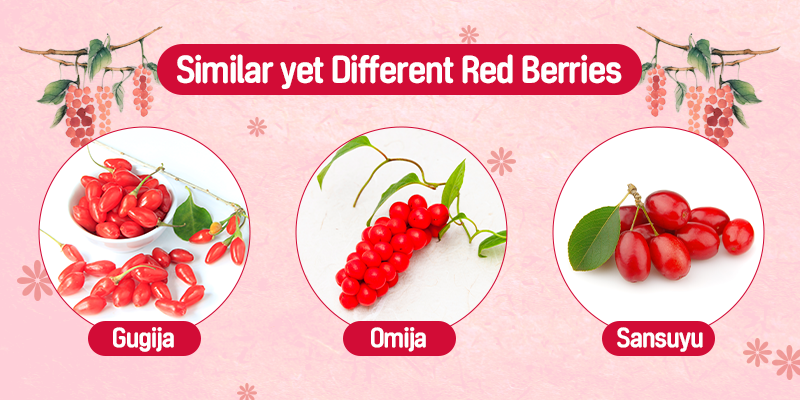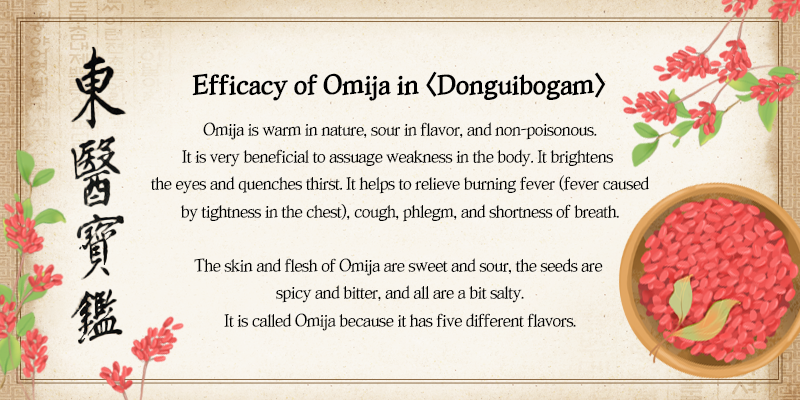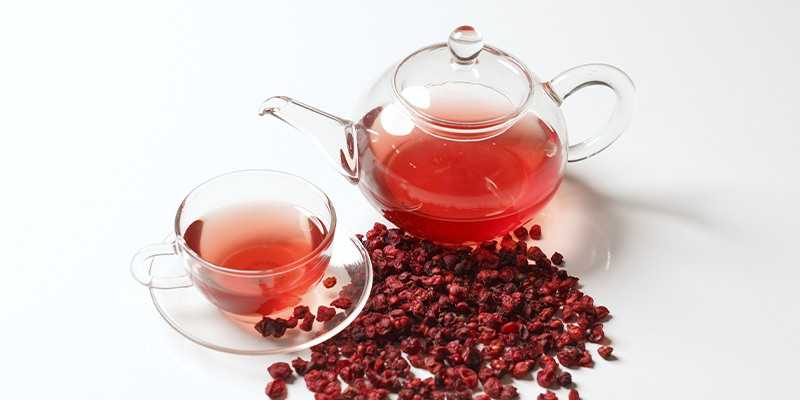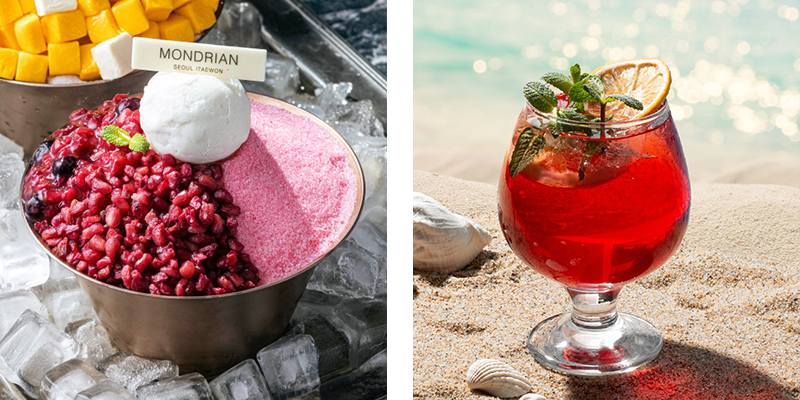한식 읽기 좋은 날
Omija: Five Red Flavors for a Healthy Summer
[Colorful HANSIK] Editor's Letter

There are three fruits called "red gems". They are omija, gugija, and sansouyou. These red berries, which look similar but are slightly different, are commonly used in herbal medicines and decoctions rather than eaten straight.
Omija, which is more rounded, is more accessible and versatile than other berries, and nowadays you can find it in the market in the form or as ingredients of various beverages, including teas and infusions. Omija is known to display five different flavors, so let us indulge in its mysterious red charm.

Korean Omija, Taste and Nutrition Recognized Throughout History
Omija is found in countries such as Korea, Japan, China, Taiwan, but Korea's omija has been considered the best since ancient times. In the <Sejong Sillok Jiriji: Geography Section of the Annals of King Sejong>, <Shingjeong Dongguk Yeojisungram: Revised and expanded edition of Survey of the Geography of Joseon>, and <Daedongjiji: Geography of the Great East>, omija is listed as a local product of Korea with records that King Sejong even sent omija to China. Even the Japanese name for omjia was "Joseon omija" meaning "Korean omija," reflecting Japanese preference for Korean omija.
Whille omija is grown all over the Korean Peninsula, theose grown along the Baekdudaegan mountain range are especially known for high quality. In particular, Mungyeong, Gyeongsangbuk-do, with is high altitude and large weather differences suitable for the growth of omija is Korea's major omija production region and was designated as the country's 'Special Industrial Zone for Omija' in 2006. From Mungyeong, it has expanded to Canada and other countries around the world.
The efficacy of omija with its reddish glow has been proven by ancient records such as the Korean <Donguibogam: Principles and Practice of Eastern Medicine> and <The Canon of Medicine>. Omija is good, but it's even better because it's Korean.

Omija, an Irreplaceably Healthy Flavor that Can't be Defined in a Single Way
The first taste is very fresh and sour, while the sweetness immediately stays in the mouth. It's a little spicy, bitter, and salty, too. It is all the story of omija. You can't define it by one flavor. Of course, if you don't have sensitive taste, you may not be able to taste all the flavors. However, each of the five flavors of omija has a meaning, so it has a good effect on the body.
According to the ancient Chinese medical records such as <Ben Cao Gang Mu: Compendium of Materia Medica> and <Ben Cao Ji Yao: Collection of the Essential Medical Herbs of Materia Medica>, the sour flavor of omija is good for the lungs and liver, the sweet flavor is good for the spleen and stomach, the salty flavor is good for the kidneys, and the spicy and bitter flavors are good for the heart. The red color of omija nourishes our five organs. This is why omija has been used as an excellent herbal medicine. Sour is the strongest among the five flavors because it contains a lot of organic acids. This sour flavor helps revitalize the body from fatigue and hydrate from thirst. This is why omija is especially good on the hot days of summer.

Its reddish color also acts as a natural pigment. When you add it to Mujigaetteok (rainbow rice cake), Baramtteok, it creates a nice pink color that blends iwith the white. Omija is worthy of being called a 'red jewel.’
Omija’s Colorful Transformation from Medicinal to Food Ingredient
Nowadays, omija frequently appears on the menus of franchise cafes. It's especially good when consumed in hot weather, so it's widely available in a variety of forms such as ade, smoothies, shaved ice, and ice cream, to enjoy in the summer season. There are even some cafes that feature omija as their main item.

The popularity of omija hasn’t been with us very long. It had been used more commonly as a medicinal herb in decoctions and as an ingredient in hot tea, which adults tended to enjoy more. So, it's pleasing to see omija making a closer, delicious step into our daily lives. Omija yanggaeng and omija hwachae are no longer unfamiliar.

August is the hottest month of the year. This is the time of year when cold drinks are in high demand, and with omija, one can beat the heat without worrying about tummy problems. Add a spoonful of homemade omijachung in sparkling water and ice and quench your thirst with the healthy, refreshing red flavor! Of course, omija is also terrific to enjoy warm in the summer, too.
References Encyclopedia of Korean Folklore, Encyclopedia of Korean culture of Basic Necessities, Health Trends, Health Digest
Photos Mondrian Seoul Itaewon on Instagram (@mondrianseoulitaewon), Cafe Ogada on Instagram (@ogada_official)

 한국어
한국어
 English
English






